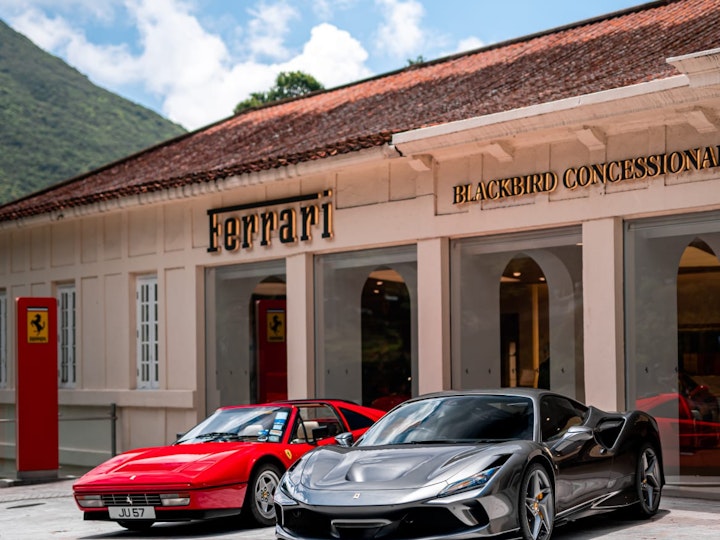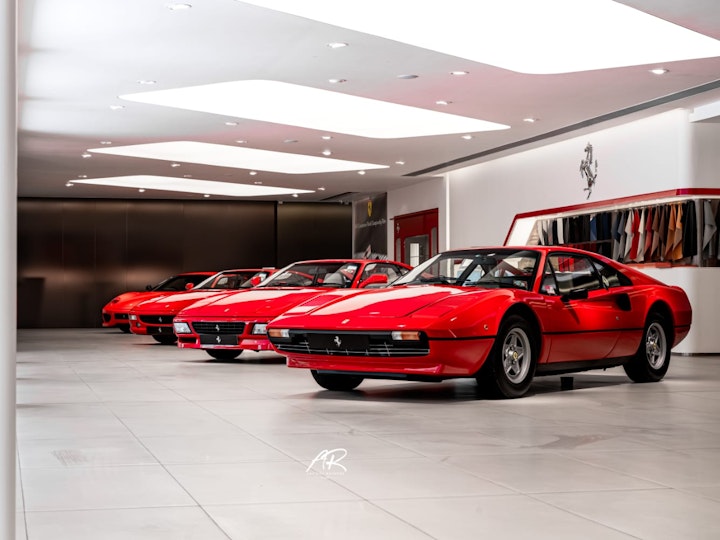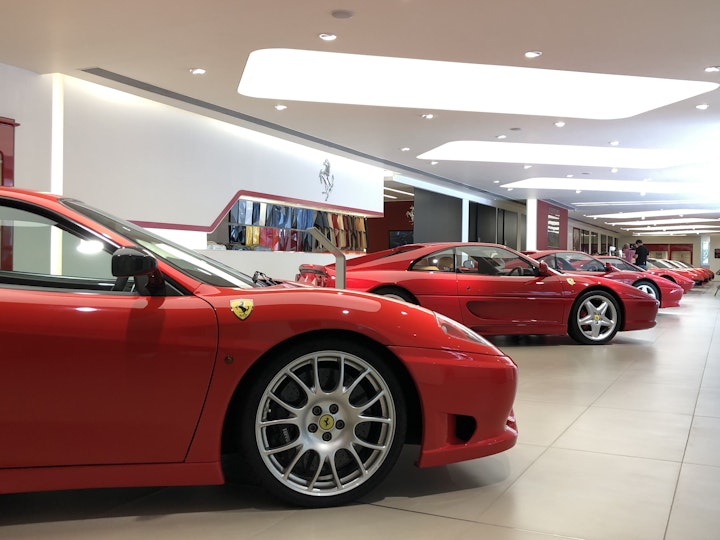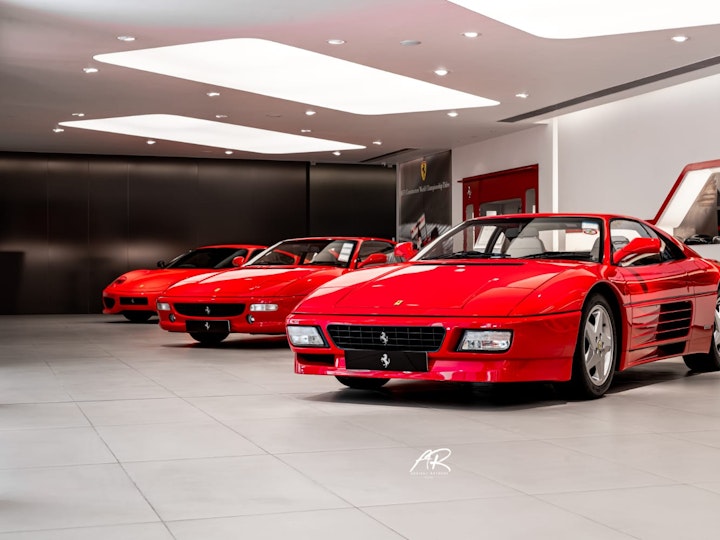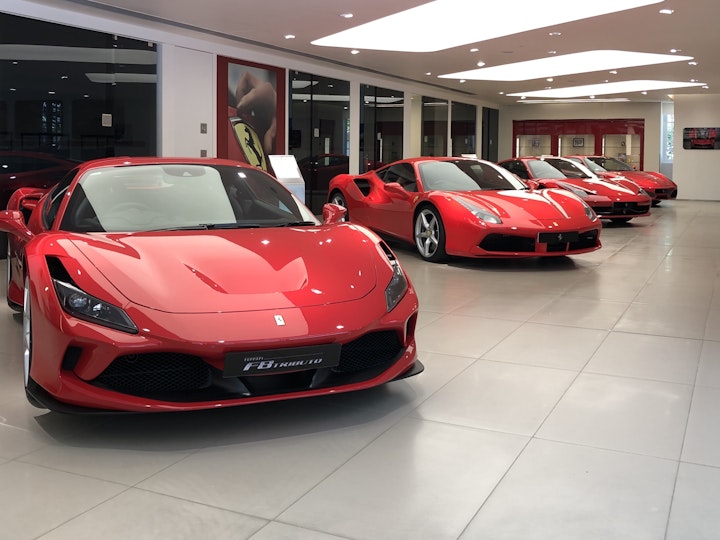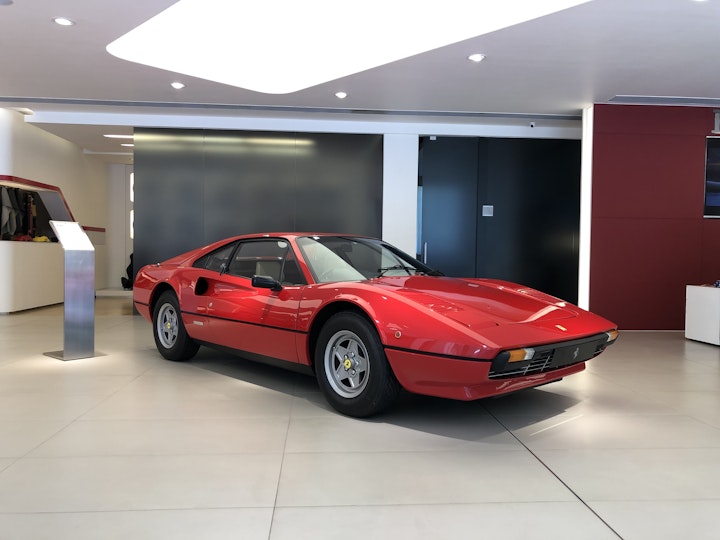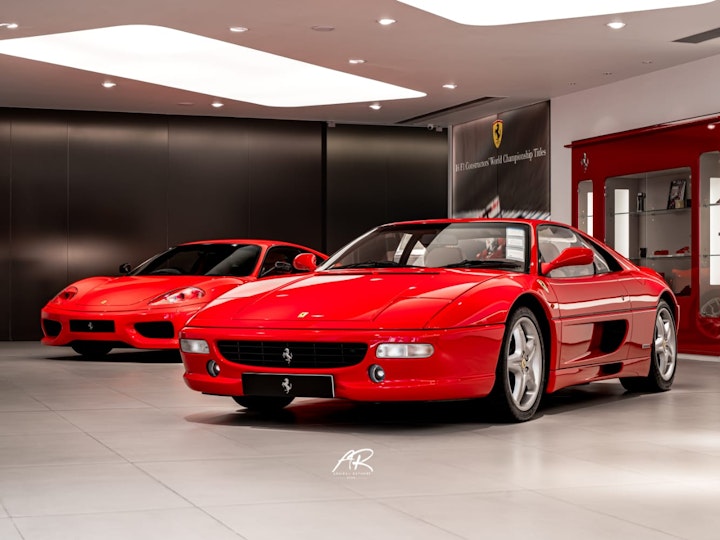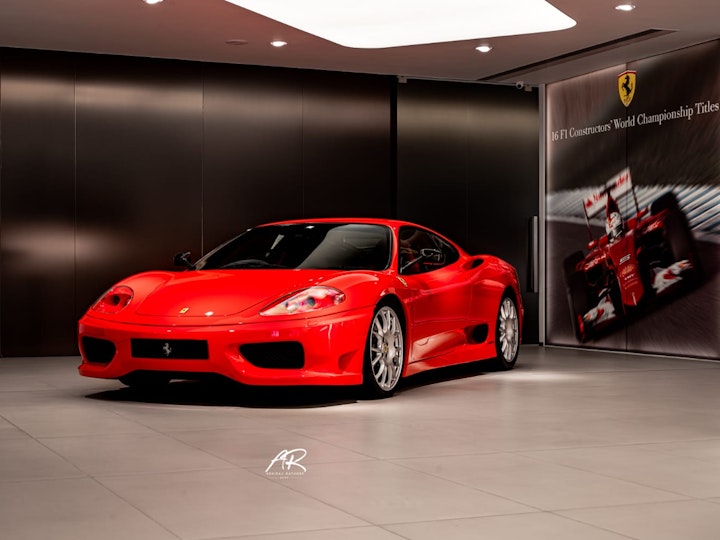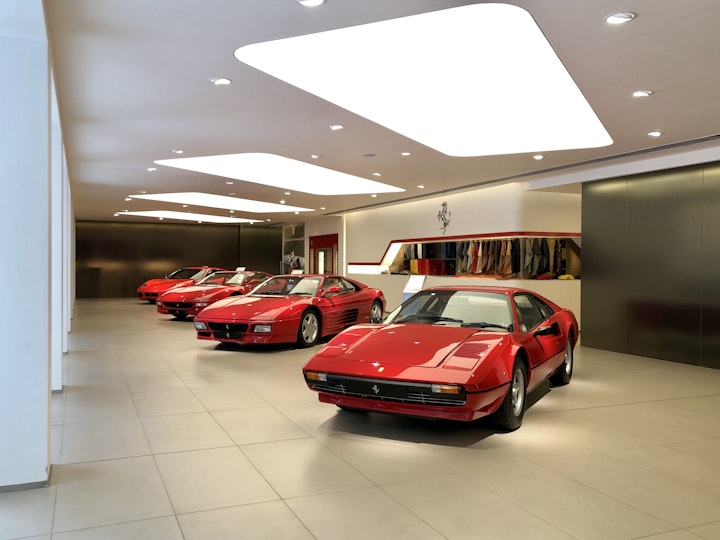Followers of my Instagram account and YouTube channel should be able to easily guess my favorite car manufacturer. So one can imagine my excitement when Hong Kong’s official Ferrari dealer, Blackbird Concessionaires, got in touch with me shortly after seeing our first YouTube video on my Ferrari 328GTS (see “328GTS” blog post for more information) and suggested a collaboration. To be honest, when I started my YouTube channel, deep down, one of the goals I had was to one day be able to work with Blackbird. But working with the official Ferrari dealer just seemed so out of reach for a small YouTube channel, so I never really gave it too much thought. Who knew this dream would’ve been realized within two weeks after launching our first video? I am truly grateful.
Blackbird is not your usual car dealer, they are passionate and they really know their stuff – especially with their media contents. Therefore you can bet that when they considered my YouTube channel, they knew full well what my channel was about – we provide in-depth review of interesting classic cars – and that was exactly what the collaboration opportunity was about. To celebrate the arrival of the newest Ferrari V8 model, the F8 Tributo, Blackbird have put together a one-of-a-kind display in their Repulse Bay showroom presenting the entire Ferrari V8 bloodline from the very beginning. Named “8 for 8”, the display consists of 8 Ferrari V8 models, from the 1975 308GTB all the way to the F8 Tributo.
The 8 models are: the 308GTB, 348TB, 355GTB, 360 Challenge Stradale, F430, 458 Italia, 488GTB, and the F8 Tributo. Yes, the 328GTB is missing. That is due to lack of space and the catchy “8 for 8” display theme (adding the 328 would be 9). As mentioned in my 328GTS video and blog post, the 328 is not very different from its predecessor, the very successful 308. Ferrari took the 308’s last engine, the 3.0 quattrovalvole V8, and increased the capacity to 3.2, hence the 328. The 328 is a great car, but the 308 was so successful and capable at the time, there really was no need for Ferrari to make any dramatic improvements or introduce any groundbreaking development. Hence, whenever there is any limitation for a display of this sort, the 328 often has to make way for other models that reflect more significant improvements and technological leaps in the brand’s history.
Now for a bit of history. For the longest time, Enzo Ferrari preferred the front-engine 12-cylinder configuration in his cars – as that was what his race cars at the time were like. For a long while, mid-engine sub-12-cylinder cars were not really his cup of tea. He also once famously said that the horse should be in front of the cart, and not behind it. Hence, even when Ferrari made their first mid-engine V6, the beautiful 206/246GT, it was badged as the Dino and not Ferrari. It was not until 1975, and two mid-engine Dino models before that, that Ferrari was finally persuaded to release a mid-engine V8 model under its name – and boy was that a good decision. It instantly became the brand’s most successful model line in terms of numbers sold, with the 308GTB selling in excess of 12,000 units, a record that wasn’t broken until the 360 Modena in 1999 with 16,000+ units.
308GTB
The 308 on display at Blackbird is the most valuable iteration, being the Vetroresina version. Vetroresina means fibre glass in Italian, referring to the bodywork of the earliest 308’s (from 1975-1977). These early 308’s had their entire body made in fibre glass (except for the front bonnet, which is steel), making them very light at around 1,050kg only. Ferrari made 808 of them before switching to steel bodies after 1977 in order to cut costs – as it was cheaper for Ferrari body maker Scaglietti to make the body parts in steel than fibre glass. However, steel body 308’s weigh 150kg more than Vetroresinas, a significant difference. Due to its lightweight body and scarce numbers, Vetroresina 308’s are worth more than double the value of steel 308’s today.
The earliest 308’s had carburetor V8’s with two valves per cylinder. In 1980, U.S. emission regulations forced Ferrari to go with fuel injection engines, which made the cars too slow with significant power drops (215HP for Euro models and 204HP for U.S. models). In 1982, Ferrari released the quattrovalvole engine, meaning the engines had four valves per cylinder (32v), a set up that lasted another two models until the 355. Production ended in 1985, after a successful 10 year run.
348TB
Ferrari introduced the 348TB in 1989 with high hopes. Unlike the 328, the 348’s engine configuration went through major changes. The 308 and 328 both had their engines mounted transversely, but the 348’s engine was mounted longitudinally, allowing the engine to sit lower and to create space on both its sides for two radiators (previously Ferrari placed radiators at the front of the car, with the water pipes running under the cabin making it very hot –trust me as a 328 owner, this is true). More importantly, while the engine sat longitudinally, the transmission remained transverse, creating a “T” shape. This design, first introduced in the four-seater Mondial T (the T in the model name reflecting exactly that), was taken from Ferrari’s highly successful 312T Formula 1 car from the 70’s. The 312T, driven by legendary driver Niki Lauda, won multiple championships. The 348’s V8 engine, of course, had its capacity increased to 3.4 liter, hence the “348” designation.
The 348 was a commercial success, selling 8,884 units between 1989 and 1995. However, its reputation suffered compared to its other V8 siblings. The 348 allegedly has subpar on-limit handling, with many in-period car magazines noting the car’s inability to stay on the track when pushed hard. Later 348’s had their handling improved, but by then Honda’s legendary NSX was introduced, creating a lot of noise, and therefore somewhat overshadowed the 348 (although personally I can’t see myself picking a regular NSX over the 348, ever). The 348’s looks, however, remain iconic, taking cues from its iconic 12-cylinder ‘big brother’, the Testarossa.
355GTB
The 355 was an instant success. The engine capacity, as you would’ve guessed by now, was increased to 3.5 liter. Why the “355” designation then? Because the engine now has five-valves-per-cylinder instead of the previous four, hence 355. Considered by many to be one of the most beautiful model in the V8 line, the 355 now also has serious power, at 375HP. It was also the first Ferrari with the new Ferrari F1 transmission. Today, manual cars are more valuable, as the first generation F1 system is considered slow and outdated. However, many people forget the impact the F1 transmission’s debut had in the automotive world. It was a jaw dropping technology that came straight from the Formula 1 cars and everyone wanted one. It was therefore the other way around back in 1995, where you would’ve been considered outdated, if not outright silly, to opt for the manual instead of the F1.
360 Challenge Stradale
The 360 Modena, a model close to my heart as I have one in manual, is to me the most beautiful one out of the entire V8 line. The shape, proportions, size and stance are all just right. It also helps that I am convinced that it took design cues from the F50 (as V8 models could no longer refer to the designs of the regular production 12-cylinder models by that era since they went back to front engine configuration, i.e. the 550 Maranello), which is my ultimate dream car. The 360 was a big leap – the chassis and body panels were all made in aluminium. The engine, now with 3.6 litres, produced 400HP. It was an immediate commercial success, selling over 16,000 units between 1999 and 2005.
The model present at Blackbird’s 8 for 8 display is the Challenge Stradale, the ultimate and lightweight edition of the 360 Modena. It is the only special edition V8 present at the 8 for 8 display. This is the other significant development from this model, where a high-production lightweight edition was introduced (1,200 units, considered rare today). However, the 360 Challenge Stradale was not the first model to have an ultimate and lightweight edition. That honour goes to the 348 Competizione, where only 50 were made. The Challenge Stradale was such a success that afterwards, all V8 models had high-production lightweight editions – like the 430 Scuderia, 458 Speciale, and 488 Pista.
The V8 engine to date
Before we move on to the F430, we must pause here and highlight one phenomenon among the models we have reviewed so far. Amazingly, all of the 308, 328, 348, 355, and 360 shared the same Franco Rocchi-designed V8 engine. Obviously, various improvements and enhancements were made throughout the years (after all, early 308’s had about 220HP and by the time of the 360 Challenge Stradale, it was increased to 420HP), but the block and the bore centres remained essentially the same. This is impressive in every respect, even more so when you remember to also add the 288GTO and F40 into the engine’s CV.
F430
2004 came the F430 and where the most important development was its completely brand new engine, known as the F136 engine. Still a V8, it went back to four-valves-per-cylinder, generating 490HP – a figure necessary as Lamborghini introduced a direct competitor – their new V10 Gallardo.
The F430 has other new and important features, such as the e-differential, which allows different driving modes to be selected by the driver through the manettino switch on the steering wheel. The F430 is the last V8 model to offer the 6 speed manual transmission, although the majority were delivered in F1 transmission (rumour has it that only about 10% of F430’s are manuals). The F1 transmission in the F430 era is the most sophisticated and ultimate generation of the Ferrari single-clutch F1 transmission, before the brand moved on to dual clutch transmissions systems like the rest of the auto industry.
Personally, I find the F430 to be the best V8 model to drive, with the perfect balance of technology and analogue feeling. It is capable but raw, easy to drive fast but also demanded respect. I know because my first Ferrari was a F430 and I miss it dearly.
458 Italia
The 458 Italia was a huge leap in the V8 model line. The mechanical and aerodynamic technology infused in this model were significantly more advanced than the already very capable F430, bringing Ferrari to a new era of technological might. Still with the F136 engine, but the car produced 570HP, delivered through an all-new 7-speed dual clutch transmission with instant shifts. Aerodynamic enhancements included moving aerodynamic parts – like the two front lips, which moves under certain downforce loads.
488 GTB
The 488GTB marked Ferrari’s first return to the twin turbo V8 engine after the legendary F40. The switch was mainly due to changes in automotive emission regulations, requiring turbocharged technology to reduce carbon emissions. However, Ferrari promised its customers that the turbo engine would feel no different from their naturally aspirated predecessors – a promise which Ferrari delivered as the 488’s engine has minimal, if not nonexistent, turbo lag and also sings just as loudly as its naturally aspirated older brother, the 458 Italia.
It was named the 488 not because it has a 4.8 litre engine – being turbocharged meant engine capacity was reduced to 3.9 litres – but that each cylinder has 488cc capacity. Just in case you are still in doubt about this new turbocharged direction - Ferrari’s latest twin turbo engine has won the “Engine of the Year Award” 4 years in a row at the International Engine of the Year Awards.
F8 Tributo
Finally, we reach the star of the display – the newest F8 Tributo. No longer deriving its name from engine figures, the F8 Tributo is supposed to be a tribute to the Ferrari V8 line, because it is the ultimate and most powerful V8 model to date, with 710HP (engine remains to be a 3.9 litre twin turbo V8).
Aerodynamic design reached new heights, with the dramatic S-Duct design, first appearing in the 488 Pista, showing how air is shaped and directed right from the very moment it reaches the front end of the car. Internally, the car’s electronic systems continue to cater to modern-day customer needs – with the Ferrari Driving Enhancement system assisting drivers to drift the car without spinning off by calculating the car’s angle and speed.
We hope you enjoyed this virtual tour of the Ferrari V8 model’s history. We want to give special thanks to Blackbird Concessionaires for giving us this unbelieveable opportunity to cover their one of a kind and unprecedented display of one of Ferrari’s most successful model lines. Thank you, truly from the bottom of my heart.
You can see our YouTube video of the display here:
Thank you as always to the team, for which none of this would’ve ever been possible if it weren’t for all their help!
Alex (http://www.taipanmedia.com)
Dave (Email: david@lemonadeandgiggles.com)
Adhiraj Rathore (IG: @supercarsofhongkong)
Ewan (IG: @_windee_)
Alex C. (IG: @nofishshark)
Special thanks to Hugo (IG: @hugochow) for the equipment!









